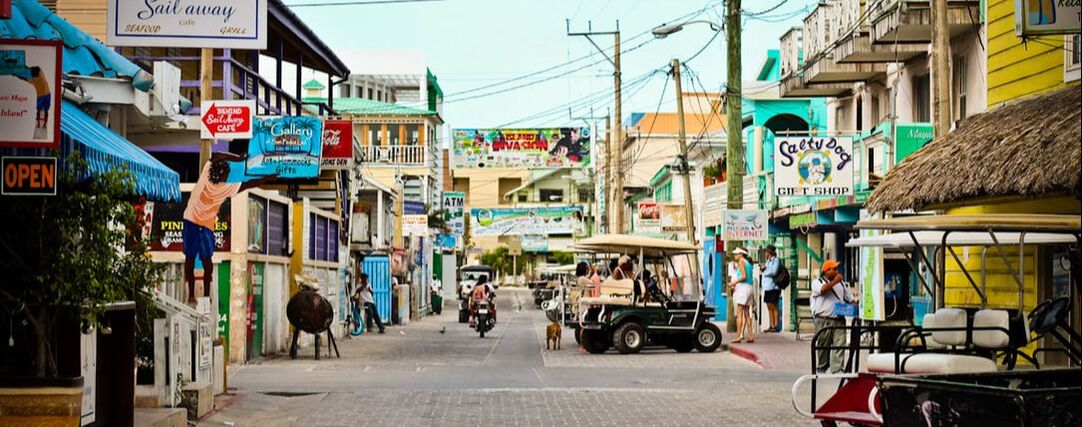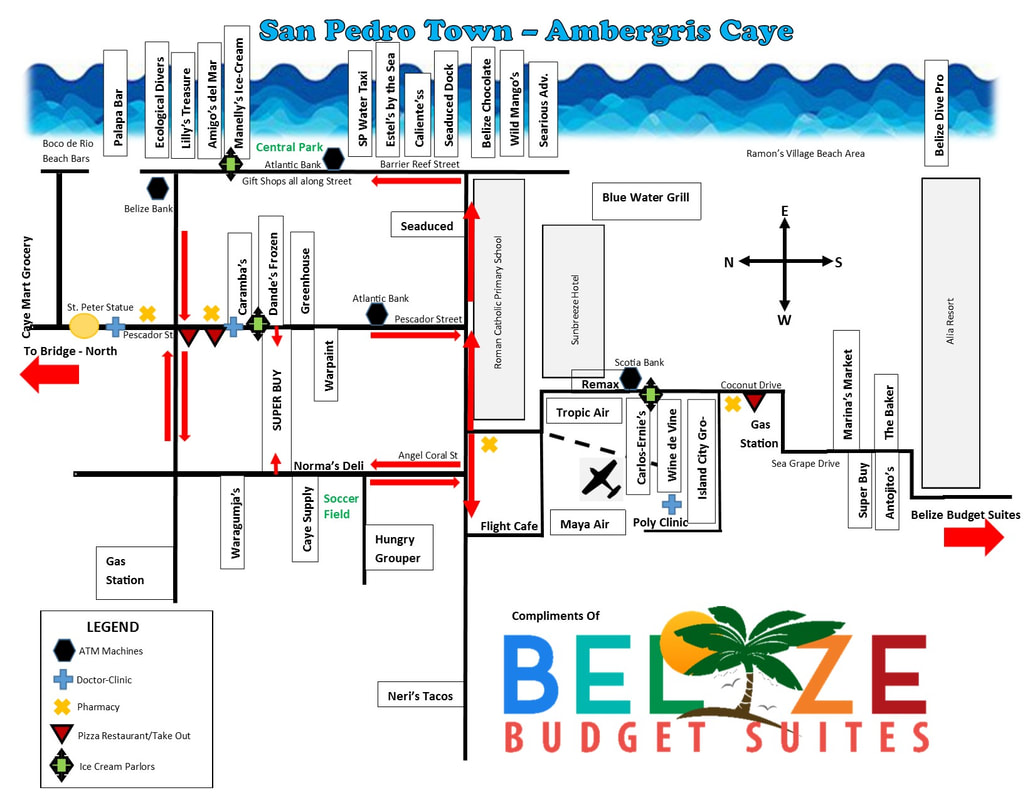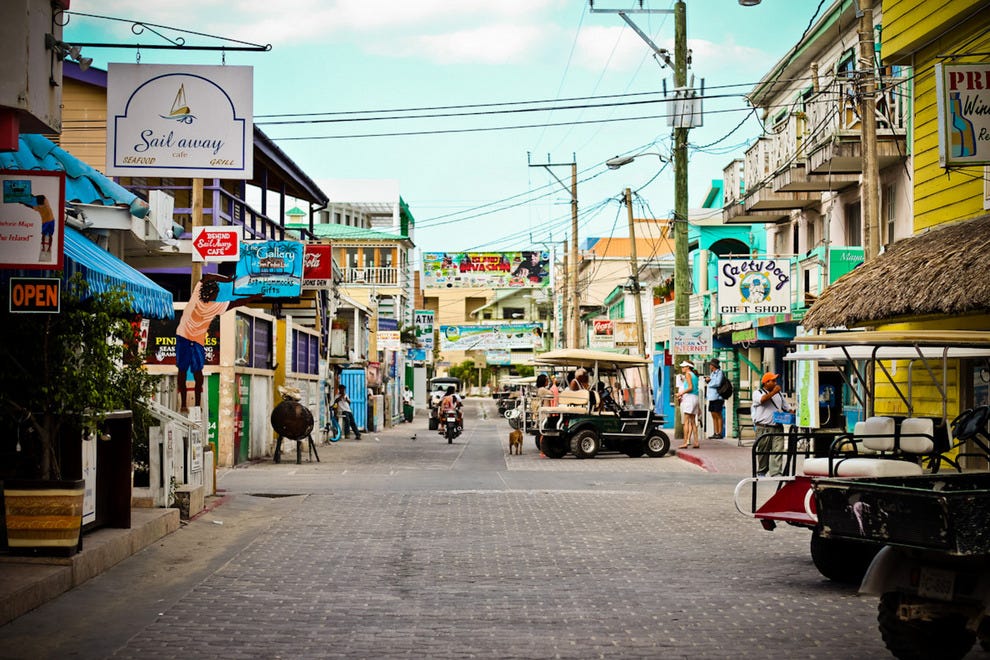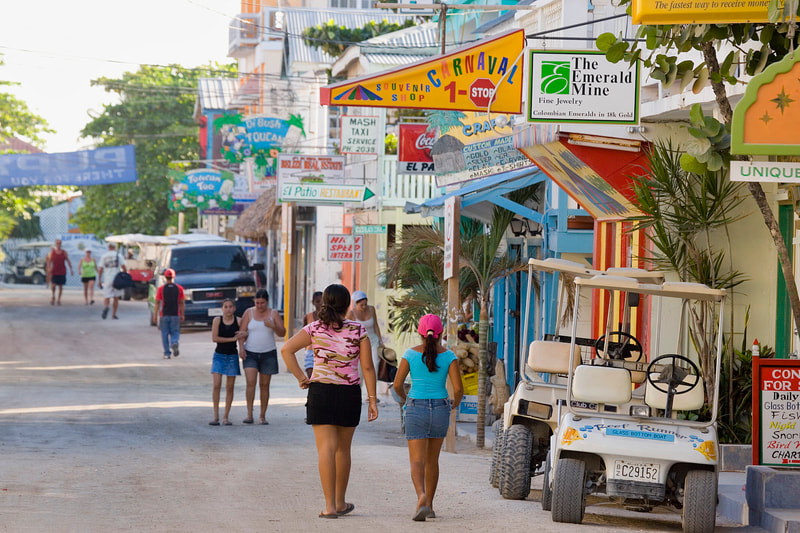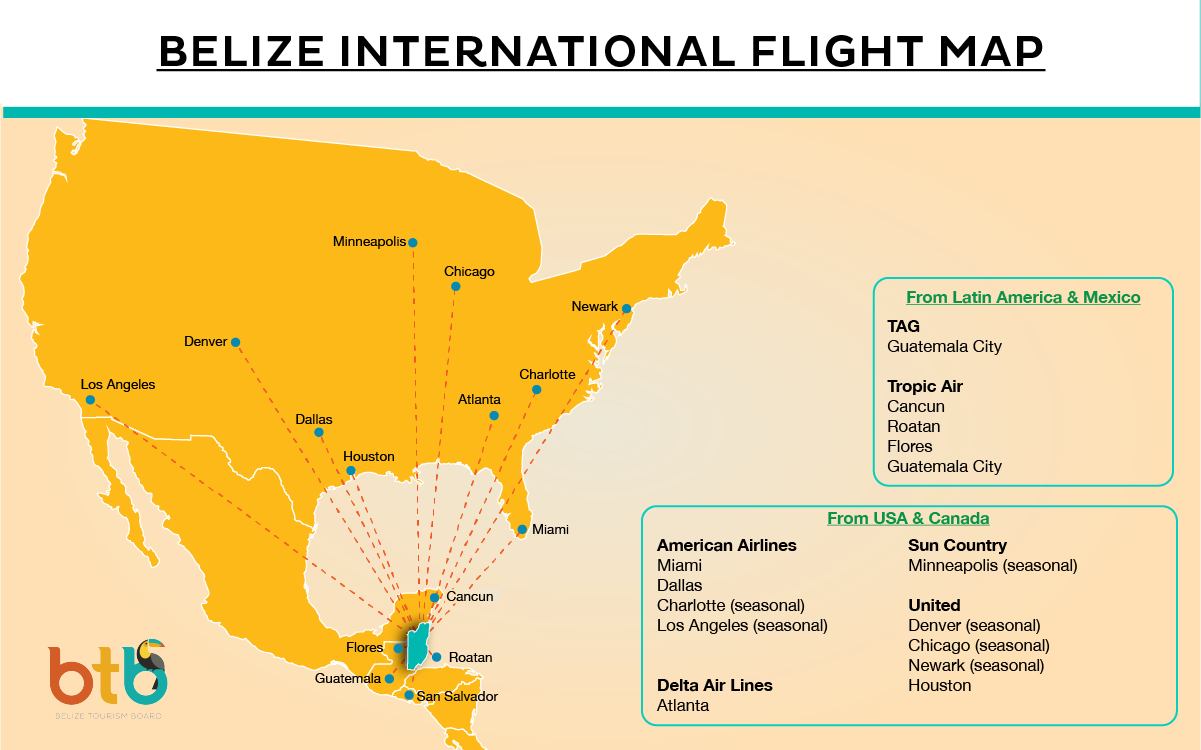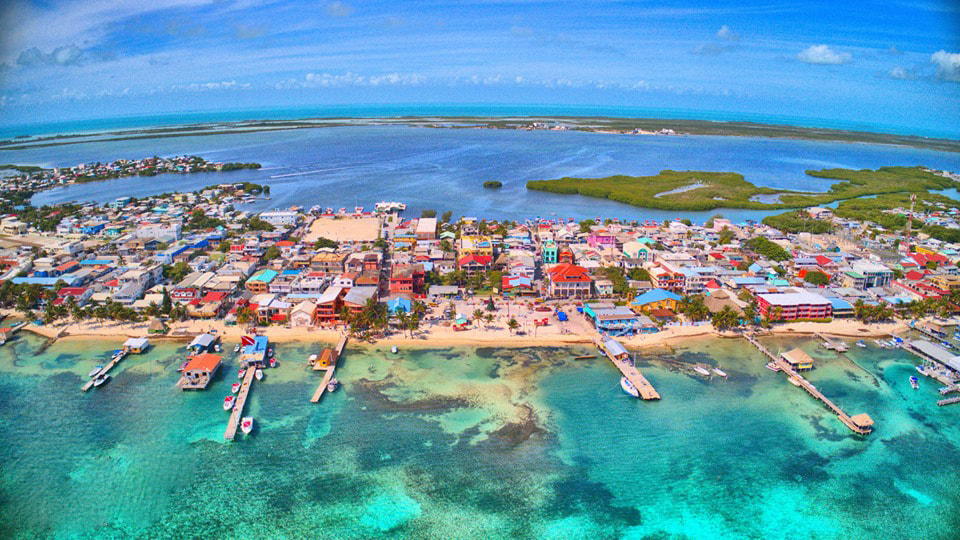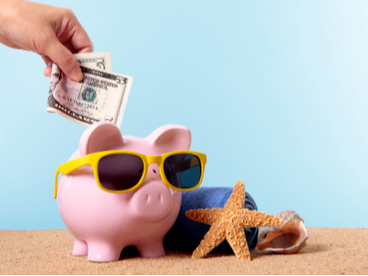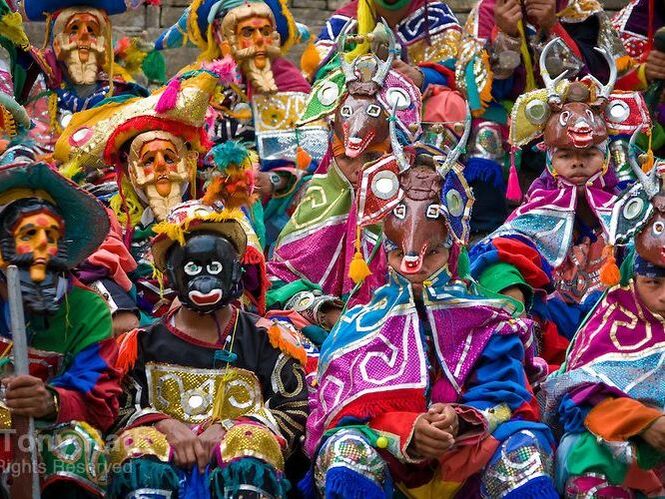Saint Peter Town - the only town on the island of Ambergris Caye is about one and a half miles long and in some places about a mile wide. Its atmosphere is that of a small bustling fishing village, and is home to the majority of the island's population as well as a majority of the restaurants, bars, clubs and hotels on the island. Visitors will most likely find what they need within walking distance.
The town is clustered with wooden houses, some with Mexican decor, other Caribbean, and some still remain with the English colonial architecture. Gift shops, boutiques, bars, cafes, and restaurants adorn Front and Middle streets (now named Barrier Reef & Pescador Drive). A short walk in town and you'll feel the friendliness of the people and witness the ease of their lifestyles as they go through daily life. Bare feet, tee-shirts, and shorts is the typical island dress code.
The people of the island are call "San Pedranos" and speak English, Spanish, Creole, and Maya all at the same time, making it their own island dialect. They are proud of their heritage and are willing to share it with tourists. Before tourism picked up in the eighties, the islanders were mostly Mestizos (Maya-Spanish). Today they share their island with the Creole, Maya, Central American refugees, and Americans that have made San Pedro their new home.
The vast majority of San Pedro's residents are good humored and tolerant, their lifestyle casual and simple. The tin-roofed, colorfully, painted wooden houses are cheerfully dilapidated, giving the distinct impression that you can relax all day if that's is your choice.
The evenings on the island are a social event. You will find tourists and islanders at different bars and restaurants listening to reggae and Latin music and sharing the day's adventures. For those that like to take a day off from driving, day tours can be arranged to the various Maya archeological sites and Belize's lush rain forest. For those who just want to relax, a day on the sandy beach, may be all that is needed.
While San Pedro is suffering under the strain of rapid growth, Ambergris Caye still has much to offer. People are friendly, accommodations are comfortable, and there's plenty to do. Resorts on the outskirts of San Pedro are noticeably more expensive, but tend to be more tranquil and luxurious than hotels in town. Hikers and bicyclists will find that much of the island is covered with a high broadleaf forest interspersed with freshwater sinks that attract lots of wildlife, including an abundance of birds.
Birders can spot warblers, egrets, herons, pelicans and frigate birds. Bird Cayes, located on the bay (leeward) side of Ambergris, shelters rookeries for 30 species, including the reddish egret, greater egret, and cormorant. Spoonbills, avocets, and ducks also congregate here. Turtles nest on certain yet undeveloped beaches, and even large cats prowl through the mangroves. Thousands of shells litter the beaches, with the coral reef being less than a mile offshore.
Ambergris Caye island has the largest single concentration of tourist services, with San Pedro still being able to retain a laid-back atmosphere. Most of the island has sandy streets, that belong to slow moving golf carts and baby strollers.
The water off the island is iridescent blue and immediately accessible to the residents and guests. A cooling trade wind sweeps in front the northeast much of the time, keeping insect pests at bay. A variety of food and drink is available, and some of the country's best cooks are happy to prepare fresh seafood exactly the way you like it.
The town is clustered with wooden houses, some with Mexican decor, other Caribbean, and some still remain with the English colonial architecture. Gift shops, boutiques, bars, cafes, and restaurants adorn Front and Middle streets (now named Barrier Reef & Pescador Drive). A short walk in town and you'll feel the friendliness of the people and witness the ease of their lifestyles as they go through daily life. Bare feet, tee-shirts, and shorts is the typical island dress code.
The people of the island are call "San Pedranos" and speak English, Spanish, Creole, and Maya all at the same time, making it their own island dialect. They are proud of their heritage and are willing to share it with tourists. Before tourism picked up in the eighties, the islanders were mostly Mestizos (Maya-Spanish). Today they share their island with the Creole, Maya, Central American refugees, and Americans that have made San Pedro their new home.
The vast majority of San Pedro's residents are good humored and tolerant, their lifestyle casual and simple. The tin-roofed, colorfully, painted wooden houses are cheerfully dilapidated, giving the distinct impression that you can relax all day if that's is your choice.
The evenings on the island are a social event. You will find tourists and islanders at different bars and restaurants listening to reggae and Latin music and sharing the day's adventures. For those that like to take a day off from driving, day tours can be arranged to the various Maya archeological sites and Belize's lush rain forest. For those who just want to relax, a day on the sandy beach, may be all that is needed.
While San Pedro is suffering under the strain of rapid growth, Ambergris Caye still has much to offer. People are friendly, accommodations are comfortable, and there's plenty to do. Resorts on the outskirts of San Pedro are noticeably more expensive, but tend to be more tranquil and luxurious than hotels in town. Hikers and bicyclists will find that much of the island is covered with a high broadleaf forest interspersed with freshwater sinks that attract lots of wildlife, including an abundance of birds.
Birders can spot warblers, egrets, herons, pelicans and frigate birds. Bird Cayes, located on the bay (leeward) side of Ambergris, shelters rookeries for 30 species, including the reddish egret, greater egret, and cormorant. Spoonbills, avocets, and ducks also congregate here. Turtles nest on certain yet undeveloped beaches, and even large cats prowl through the mangroves. Thousands of shells litter the beaches, with the coral reef being less than a mile offshore.
Ambergris Caye island has the largest single concentration of tourist services, with San Pedro still being able to retain a laid-back atmosphere. Most of the island has sandy streets, that belong to slow moving golf carts and baby strollers.
The water off the island is iridescent blue and immediately accessible to the residents and guests. A cooling trade wind sweeps in front the northeast much of the time, keeping insect pests at bay. A variety of food and drink is available, and some of the country's best cooks are happy to prepare fresh seafood exactly the way you like it.
NORTH OF SAN PEDRO TOWN
North of San Pedro is San Juan (or St. John), a community located directly north of the center of San Pedro Town. The area is home to majority of the work force of San Pedro and has its own unique mixture of people from all over Belize, Central America, North American and even Europe. The Zaak Ba Ajo Lagood is a great spot to snorkel, boasting unique aquatic life and the lagoon's own little blue hole.
Boca Del Rio or Mouth of the River, is a settlement in the north of the island located directly after San Juan and just before the river. A bridge wide enough to accommodate people, bicycles and golf carts like Boca Del Rio Area to other areas in the far north of the island. Visitors to Boca Del Rio can enjoy swimming where this salt water river meets the sea as well spending time at the Boca Del Rio Park. The water slides in the park are especially fun for small children.
SOUTH OF SAN PEDRO TOWN
South of San Pedro is San Pablo (or Saint Paul), a small community located just over a mile and a half southwest of the center of San Pedro Town and facing the lagoon. Visitors often take bicycles or golf cart rides up Avenida Del Sol which stretches to the Lagoons edge - in San Pablo to watch to sparkling sunsets over the glossy surface of the lagoon.
Mar De Tumbo or the Tumbling Sea is the only spot on the island where the waves tumble to the shore through a break in the reef instead of first breaking on the reef life the rest of the island. This is a popular swimming area located just over a mile south of San Pedro.
Other communities include the Escalente Sub-division in the south, San Miguel near San Pablo, San Telmo in the south near Mar De Tumbo, Sunset Coves in the south, San Pedrito located along the San Pedro Lagoon, Tres Cocos in the north, Las Palmas, and the Basil Jones area both also located in the north.
North of San Pedro is San Juan (or St. John), a community located directly north of the center of San Pedro Town. The area is home to majority of the work force of San Pedro and has its own unique mixture of people from all over Belize, Central America, North American and even Europe. The Zaak Ba Ajo Lagood is a great spot to snorkel, boasting unique aquatic life and the lagoon's own little blue hole.
Boca Del Rio or Mouth of the River, is a settlement in the north of the island located directly after San Juan and just before the river. A bridge wide enough to accommodate people, bicycles and golf carts like Boca Del Rio Area to other areas in the far north of the island. Visitors to Boca Del Rio can enjoy swimming where this salt water river meets the sea as well spending time at the Boca Del Rio Park. The water slides in the park are especially fun for small children.
SOUTH OF SAN PEDRO TOWN
South of San Pedro is San Pablo (or Saint Paul), a small community located just over a mile and a half southwest of the center of San Pedro Town and facing the lagoon. Visitors often take bicycles or golf cart rides up Avenida Del Sol which stretches to the Lagoons edge - in San Pablo to watch to sparkling sunsets over the glossy surface of the lagoon.
Mar De Tumbo or the Tumbling Sea is the only spot on the island where the waves tumble to the shore through a break in the reef instead of first breaking on the reef life the rest of the island. This is a popular swimming area located just over a mile south of San Pedro.
Other communities include the Escalente Sub-division in the south, San Miguel near San Pablo, San Telmo in the south near Mar De Tumbo, Sunset Coves in the south, San Pedrito located along the San Pedro Lagoon, Tres Cocos in the north, Las Palmas, and the Basil Jones area both also located in the north.

